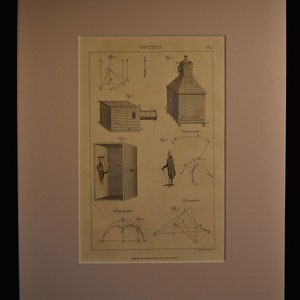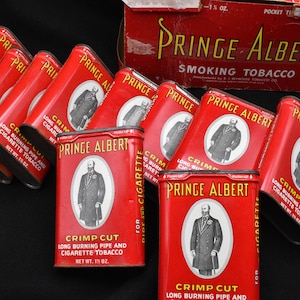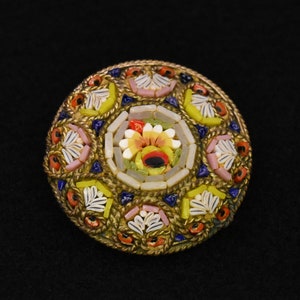









Antiques
Extremely Rare Modern Woodmen of America Stamp / Print Block
-
DetailsThis gem is an exceedingly rare piece of history that cannot be found anywhere else... this is truly a unique item. Before I get into this little treasure, some history...
Modern Woodmen of America is actually not modern at all. It was formed in January of 1883 by a gentleman named Joseph Cullen Root. He was an immensely successful businessman, having a plethora of experience forming and successfully leading several businesses. From running a mercantile establishment, a grain elevator and two flour mills, to selling insurance and real estate, teaching bookkeeping classes, managing a lecture bureau, and practicing law, Mr. Root was already a wealthy gentleman. He had been a member of several fraternal organizations, but wanted to create an organization that would help family members following the death of the main breadwinner. Fraternal organizations were quite popular in the 19th century. They were a form of fraternal membership, whereby members would pay dues into a fund that would then be invested or used for the benefit of its members. You may have heard of the Free Masons - this was one of the first and most successful fraternal organizations in history. However, the membership requirements were very limiting, often depending on sex, age, religion and social standing to join. Root, however, did not see things quite the same way. Religiously, the group was quite open, accepting "Jew and Gentile, the Catholic and Protestant, the agnostic and the atheist." However, until the mid-1900s, membership was restricted to white males between the ages of 18-45 from the 12 "healthiest" states - Ohio, Indiana, Illinois, Michigan, Wisconsin, Minnesota, Iowa, Missouri, the Dakotas, Nebraska and Kansas. Residents of large cities were also disqualified from membership, as were those employed in certain professions, such as railway workers, underground miners, gunpowder factory employees, liquor wholesalers and manufacturers, saloon keepers, "aeronauts", sailors on the lakes and seas, and professional baseball players - basically, the highest-risk professions. He decided to name his organization the 'Woodmen,' after hearing a pastor tell a tale of early pioneers clearing forests to make way for homes. He added 'Modern' to reinforce the ideal of change, to reflect the times. America was added as a bit of patriotism, and thus, the organization of Modern Woodmen of America was born.
They were extremely successful and still exist today, offering life insurance and investments to its members. One element that set the Woodmen apart, however, was their drill teams. Not physical drilling - think more of a marching band. Chapters were formed around the country and every one had their own drill team, each with their own colours and uniforms. They met annually at what was quickly dubbed 'Rainbow Parades' due to all the varying colours of uniforms. Each one of these chapters also tended to form around certain professions or groups - from woodworkers to textile mills. Each one of these chapters was placed under the umbrella of the Modern Woodmen, but operated quite independently from each other. Which brings us to our amazing stamp/print block...
Sadly, I have been unable to uncover any details of the original camp from which this piece hailed. Elizabethville, Pennsylvania is a tiny town east of the Susquehanna River. The town was never large - even today, it has a population of less than 1600 residents. However, these small towns were those in most need of fraternal organizations, necessitating them to form and secure their own retirement and life insurance needs. The location of the town made them a convenient and successful woodmill and the pioneering spirit is captured in this wonderful stamp / print block. There have been many logging camps that formed around Elizabethtown, as mills and lumber stores still dot the landscape of central Pennsylvania. The records of these camps are unfortunately incomplete and I have been unable to pinpoint the location of this particular camp - 'Camp 7079' - from June of 1917. Apparently, however, they were adequately wealthy that this incredible piece of art was commissioned to be carved in order to adorn either their newsletters or more important documents. The image would first have been drawn by an artist and then meticulously carved into a copper by another, equally talented individual. The details and image are staggering - remember, this was all done by hand. The logo is perfect, as are the leaves and details surrounding the scene. Within, you can see two woodmen working on a still-standing tree and fallen log, with a basic wood cabin in the distance, complete with a cauldron over an open fire and a doting wife standing in the doorway. The image features more elements of America's history, from a cornucopia (Thanksgiving horn) to the scales of justice, on the left. I hesitate to label the woman standing on the right, next to the cornucopia. Although she could be Lady Justice, she's separated from her scales and missing her blindfold and sword. As such, her identity remains a mystery.
This beautiful piece of antique art is unique and simply staggering. Measuring an impressive 11.5 cm x 5 cm, it is fairly large, when comparing to other printing blocks. It would make a beautiful and rare addition to any print block collection or Modern Woodmen member.
As always, should you have any questions or comments, I'm always happy to respond to messages almost immediately.
Thank you for visiting C&K! -
Shipping & Policies
Shipping from Canada
Processing time
1-2 business days
Customs and import taxes
Buyers are responsible for any customs and import taxes that may apply. I'm not responsible for delays due to customs.
Payment Options
Returns & Exchanges
I gladly accept returns and exchanges
Just contact me within: 3 days of delivery
Ship items back to me within: 7 days of delivery
I don't accept cancellations
But please contact me if you have any problems with your order.
The following items can't be returned or exchanged
Because of the nature of these items, unless they arrive damaged or defective, I can't accept returns for:
- Custom or personalized orders
- Perishable products (like food or flowers)
- Digital downloads
- Intimate items (for health/hygiene reasons)
Conditions of return
Buyers are responsible for return shipping costs. If the item is not returned in its original condition, the buyer is responsible for any loss in value.
Frequently Asked Questions
Can I combine delivery on multiple items?
Of course! We'd be happy to assist. Just send us a quick message and we'll make sure to combine your items into a single package to reduce the shipping costs.



